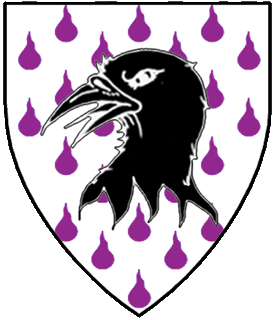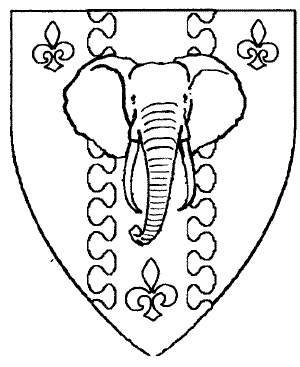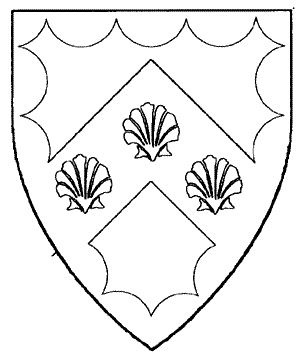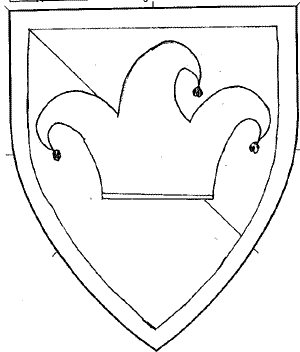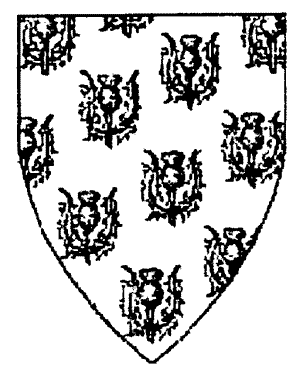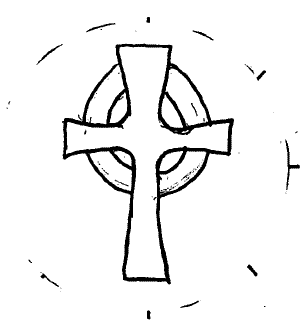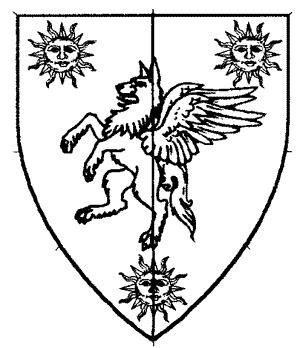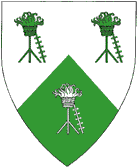
|
|

|
Table of Contents:
- From Black Lion Principal Herald
- From Rafaella Blue Anchor
- How to Read a Latin Dictionary
- The An Tir Internal Letter of Intent
- March Lion's Blood Meeting Results
- New Submissions
- Return to the IL Archive Page
From Black Lion Principal Herald
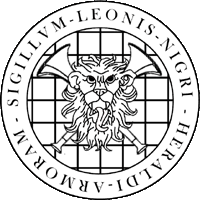
I wanted to write a quick note of thanks and praise for all the hard working heralds who put in their time and energy to make Crown work. We were a bit short handed on the field, I even put in three rounds, and those of you who know me, know I really don't like to do that. :)
Many thanks go to Jean-Phillipe Lours, Ciaran Goutte de Sang, Kintair of Hawkehaven, Finngall Summits, Uilliam Sable Loat, Beatrice Domenici della Campana, Baroness Saewynn Silfrhrafn, and a few others whose names I didn't catch or didn't remember. Crown tends to stuff my head full, and names are the first to go, so my apologies to those whom I did not name. I did indeed see your work, and appreciate it!
Francesca Æstel, Rafaella Blue Anchor, Elisabeth Pomegranate, and many others did some good work at the consult table from what I could see, and I even got to do one!!
We dunked some new heralds at this event, baptizing Jean-Phillipe as Town Crier, and finally getting Quentin Martel Dor (Dexter Gauntlet) wet. His majesty gave him his dunking ... in a manner befitting the tough job that he has done and done well.... right down the back of his doublet!
As I said to his majesty at Curia the next morning, "Thank your majesty for watering my Heralds, so that they may grow well!"
We have started a trial run of mounted heralds doing town cries, with Margaree ny Kenneth mac Kenneth as our Heraldic Liaison to the Equestrian community, and we are going to see how it goes for the next few crown events. If this works well, we may make it an institution, although his majesty made note of the leavings, and we may need to take care of that. ;) Also, Pomegranate was warranted as a equestrian herald, and did her first mounted town cry on Sunday!!
Here is some officer business I announced at the meetings.
Ciaran cluana Ferta will succeed Uilliam mac Aillén vhic Séamus as Lowenmahne Herald.
Jean-Phillipe Lours will assume the duties of Town Crier, who reports and works with Lowenmahne.
Margaree ny Kenneth mac Kenneth will be our experimental Equestrian mounted pursuivant.
Some other bits of business:
I've asked Morel Laurens to stay on as Black Stag for another 6 months. I did this so that I could focus on other officer changeovers and getting my regions filled before focusing on this one. Since we just finished Heraldic Symposium, this is an easy thing.
I have filled one of my regional positions: Gwenlian Catharne is now my Western regional herald!! I have a candidate for Inlands that will be speaking with in the near future, and am searching for Rivers region still.
One final note that I stressed in the meeting. You as heralds are the public face of the College of Heralds of An Tir. If you are doing something heraldic, whether it be town cry, field heralding, consulting, or just talking heraldry with a new person, you should always keep in mind the perception your giving off. If you are grumpy, tired, or upset, don't do it, step away from it and come back later. Happy Heralds make good PR, Grouchy Snappy Heralds can do far more serious PR damage. Just something to keep in mind when you are out there. The PR image of the CoH I feel is in greatly improved shape, and I hope to continue that trend!!
I know for an absolute fact that I am leaving people out of this letter, so my apologies if I forgot anything, which I am QUITE sure I did. :)
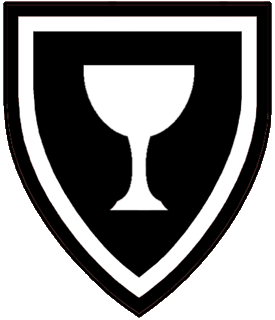
Yours in Service
Frederic Badger
Black Lion Principal Herald
Arms: Sable, a chalice within an orle argent.
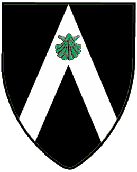
From Rafaella Blue Anchor
This is a shameless plug for pictures of heralds, especially heralds at work in tabards/regalia, nice pictures of heraldic display, etc. As you go thru this tourney season please consider donating your images to the ATH website. JPEG and GIF are the preferred formats, but I have the tools to do most format juggling. Please put your images online and contact me with the URL or email to arrange to send me attachments directly. A bit of warning is necessary so I can assure I have room in my mailbox.
Rafaella Blue Anchor
rafaella@easystreet.com
(See Black Lion rampant at http://www.antirheralds.org)
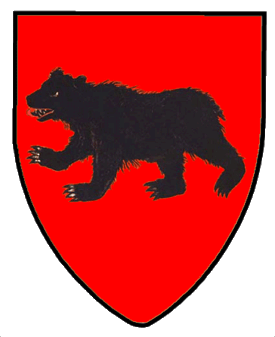
How to Read a Latin Dictionary
Ursula Georges, alias Ursula filia Georgii, alias Ursula Whitcher
A Dictionary Entry
Using a Latin dictionary can be daunting. Here, for instance, is the beginning of the entry for honestas in A Latin Dictionary by Charlton T. Lewis and Charles Short. (This dictionary may be found online at the Perseus Project, http://www.perseus.tufts.edu.)
honestas, -atis, f. [honestus] , honorableness.
I. (Acc. to honestus, I.) Honorable consideration which a man enjoys, honor, reputation, character, respectability, credit, opp. to turpitudo (class.; cf.: existimatio, dignitas).
A. Lit.: quid est honestas nisi honor perpetuus ad aliquem secundo populi rumore delatus. Lact. 3, 8, fin.: unde pudor, continentia, fuga turpitudinis, appetentia laudis et honestatis? Cic. Rep. 1, 2 ; cf.: fugiendae turpitudinis adipiscendaeque honestatis causa, id. Tusc. 2, 27, 66 ; Gell. 1, 3, 23 sq.: nihil esse in vita magnopere expetendum nisi laudem atque honestatem, Cic. Arch. 6, 14 ; cf.: omnia, quae putant homines expetenda, honestas, gloria, tranquillitas animi atque jucunditas, id. Lael. 22, 84 ; id. Phil. 7, 5, 14: cogita, ea nobis erepta esse, quae hominibus [p. 861] non minus quam liberi cara esse debent, honestatem, dignitatem, honores omnes, id. Fam. 4, 5, 2: quas familias honestatis amplitudinisque gratia nomino,on account of their character, id. Rosc. Am. 6, 15 : honestate spoliatus, id. Rab. Post. 16, 44 ; cf.: omni jure atque honestate interdictus, Q. Metell. ap. Gell. 17, 2, 7: fautor infimi generis hominum, odio alienae honestatis, Liv. 1, 47, 11 : honestatem omnem amittere,consideration, respect, Cic. Rosc. Am. 39, 114 : in eoque (officio) et colendo sita vitae est honestas omnis et in negligendo turpitudo, id. Off. 1, 2, 4 ; Gell. 1, 3, 24: honestati alicujus convenire (with subj. clause), Paul. Sent. 3, 5, 2.--In plur. (= honores): ceteris ante partis honestatibus atque omni dignitate fortunaque aliquem privare, Cic. Mur. 40, 87 .--
This article is an introduction to the Latin language, aimed at someone with a Latin-English/ English-Latin dictionary in hand. It ends with tricks for constructing grammatically correct mottoes in a sixteenth-century style, without knowing Latin grammar!
Word Endings, Not Word Order
In English, word order conveys meaning: "The goat eats grass" and "Grass eats the goat" mean fundamentally different things. If you looked up the words goat, eat, and grass in a (theoretical) English-to-English dictionary and then tried to string them together, you would end up with the sentence "Goat eat grass," which makes you sound like a small child, but is still comprehensible.
However, if you try the same strategy with a Latin-to-English dictionary, you will end up with the sentence "capella edo herba," which, if we translate it back again, means "I, the goat grass, eat."
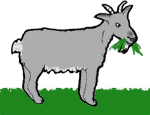
How do you say "The goat eats grass" in Latin, then?
It could be:
- capella herbam edit, or
- capella edit herbam, or
- herbam capella edit, et cetera.
Note that both nouns and verbs change form, and it's this form, not the word order, that tells us that the goat is eating the grass and not the other way around. (Technically, the word order changes the emphasis-- but it's the difference between "The goat eats grass" and "The goat eats grass," not a change in meaning.
Rule #1: Don't trust the English-Latin half of your dictionary!
Always check the meaning of a word in the Latin-English half (or even a bigger dictionary.) You might miss subtleties, or confuse words altogether.
Verbs (Declining)
English verbs change depending on the subject: I love, but my friend loves, and yesterday I loved. (In Latin these are amo, amat, and amavi.) However, verbs in Latin change much more than English verbs do: we usually change tense by adding helping verbs (I will love!), while Latin indicates most changes in tense by altering the verb itself (amabo). Latin can also indicate a subject just by the form of a verb: amo means "I love," but amas means "you love."
Latin dictionary entries for verbs include several different forms of a verb, called the principal parts, to help you build the right forms for the various subjects and tenses. (This is called declining the verb.) Let's look at some examples:
amo -are, to love passionately or fondly
We've seen already that amo means "I love." This form is called the first principal part. The dictionary heading for a Latin verb always means "I ____."
The -are means that we are supposed to remove the o from the first principal part and add are to form the second principal part, amare, which means "to love." The second principal part always means "to ____."
Since amo, amare is a regular verb (in fact, it's the first one that almost everyone learns!), we only need the first two principal parts to decline it fully. Let's look at a more complicated verb:
caedo caedere cecidi caesum, to cut, cut down, strike, beat
We've already seen that caedo means "I cut," or, more poetically, "I slaughter," and caedere means "to slaughter."
cecidi is past tense; it means "I slaughtered." The third principal part always means "I ___ed."
caesum is a neuter perfect passive participle. In other words, it's an adjective that means "having been slaughtered." We'll look at the way adjectives change later: for now, just note that the fourth principle part means "having been _____ed."
Nouns (Conjugating Cases)
Latin verbs can be feminine, masculine, or neuter. (This is true in several modern languages, such as German.) The gender is grammatical; it may or may not have anything to do with real life. (Words have gender, but people have sex!)
Latin nouns change according to their function in a sentence. This is true of English pronouns: "He cut me" means something quite different than "I cut him."
The different forms of nouns are called cases; the process of forming them is called conjugation. Here's a table, using the feminine noun capella, or she-goat.
| Case | Conjugated Noun | Translation | Grammar | Pronoun |
| Nominative | capella | goat | subject | she |
| Genitive | capellae | of the goat | --- | of her |
| Dative | capellae | to/from the goat | --- | to/from her |
| Ablative | capella | with/by the goat | --- | with/by her |
| Accusative | capellam | goat | object | her |
This table only shows one goat: for plural goats, you'd need another whole table!
Nouns fall into various groups that conjugate similarly, called conjugations. Within a conjugation, nouns may still conjugate differently if they have different genders. However, all nouns of the same conjugation have the same genitive ending, so a dictionary entry for a noun gives the genitive and the gender. Here are some examples:
malum, -i, n. an apple.
malum is "an apple," while "mali" is "of an apple." Also, malum is neuter.
leo, -onis, m. a lion.
leo is "a lion," while leonis is "of a lion." Also, leo is masculine.
Adjectives Agree
Like nouns, adjectives decline. An adjective must agree with the noun it modifies in both number (singular or plural) and case (nominative, genitive, etc.) For example, lasciva capella means "a lusty goat," but lascivarum capellarum means "of the lusty goats." Similarly, candens capella means "shining-white goat," but candentum capellarum means "of the shining-white goats."
The dictionary entry for an adjective tells us the nominative singular form of an adjective for the different genders. Here are some examples:
lascivus, -a, -um, adj. In a good sense, playful, sportive.
This adjective has three endings, one each for feminine, masculine, and neuter, in that order.
fidelis, -e. adj. That can be trusted or relied upon, true, steadfast, faithful.
This adjective has two endings. fidelis could mean something masculine or feminine. fidele applies to something neuter: for example, iussum fidele is an order that can be trusted.
Hurrah for Adverbs!
Adverbs don't change at all! Some useful adverbs are semper ("always"), saepe ("often"), bene ("well"), optime ("in the best possible way, very well") and pessime ("in the worst possible way, very badly").
Some other common words don't change, either. Two of the most useful are et ("and") and non ("not").
How to Fake a Motto
Most of the following mottoes (the Marines' slogan is an obvious exception!) are taken from sixteenth- and seventeenth-century sources such as Alciato's Book of Emblems. These mottoes use words in their dictionary form; many lovely mottoes could be constructed on the same principles. (Be careful, of course, to substitute nouns for nouns, to ensure that adjectives agree in gender, and so on!)
Pairs of nouns
- Vigilantia et Custodia = Wakefulness and Watchfulness
- Furor et Rabies = Anger and Rage
- Victoria limes = Victory (is) the Boundary
Verbs
- Video, et taceo = I see, and am silent
Adverbs
- Sic frustra = Thus in Vain
- Semper = Forever
Adverbs and Adjectives
- Semper fidelis = Always Faithful (The marines!)
- Semper pertinax = Always Firm
Nouns and Adjectives
- Salus publica = the public good
- Iusta vindicta = a just vengeance
Stealing from the Classics
- anguis latet in herba = the snake hides in the grass (This is a quote from Vergil's Eclogues! Armed with the Latin text of a work popular in the Renaissance, such as the Aeneid or the Vulgate Bible, and a line-by-line translation, one could 'borrow' many other mottoes in truly period style.)
Sources for Further Reading
- The Oxford Latin Dictionary (OLD)
- The standard reference for classical Latin words.
- Cassell's Latin Dictionary
- A comparatively portable Latin-English/ English-Latin dictionary.
- The Perseus Project, http://www.perseus.tufts.edu/
- Full text of most classical works in Latin and English, as well as various "Tools and Lexica" including a dictionary search.
- Wheelock's Latin
- A classic introductory textbook, with complete grammar information.
- Reading Latin, 2 volumes, Peter Jones and Keith Sidwell
- Learn Latin by reading selections adapted from classical Latin texts.
- Reading Medieval Latin, Keith Sidwell
- Selections from various medieval documents; the introductory sections include valuable information on the way people learned Latin in the Middle Ages.
- Alciato's Book of Emblems, http://www.mun.ca/alciato/
- A collection of mottoes, illustrations, and short poems popular in the 16th and 17th centuries. In Latin and English.
- More Mottoes from Sixteenth-Century Sources, Jeff Lee, http://www.shipbrook.com/jeff/mottoes2.html
- Mottoes taken from sources like Alciato's Book of Emblems. Most, but not all, are in Latin.

